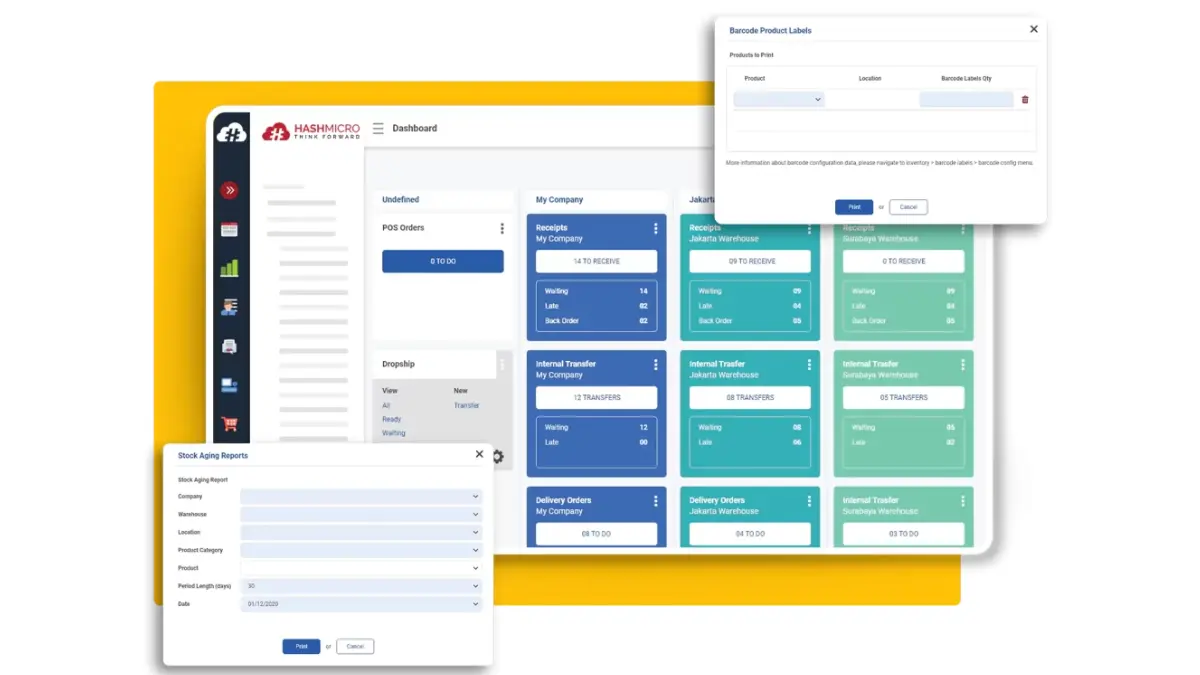Managing inventory is a critical aspect of running a successful business. One of the most effective methods for organizing and analyzing inventory is the FSN (Fast, Slow, Non-Moving) inventory analysis.
This approach helps businesses identify which items move quickly, which ones take time to sell, and which ones are not selling at all. By understanding the different types of inventory, businesses can make better decisions, improve their supply chain, and ultimately boost profitability.
In this guide, we’ll explore the essentials of FSN inventory analysis and how it can help you streamline your business operations. Whether you’re in retail, manufacturing, or any other industry, FSN analysis offers valuable insights that can enhance your inventory management strategies.
Key Takeaways
|
Table of Contents
What is FSN Inventory Analysis?
FSN inventory analysis categorizes inventory into three groups: Fast Moving (F), Slow Moving (S), and Non-Moving (N).
- Fast-moving items are products that sell quickly and are regularly restocked.
- Slow-moving items are those that take longer to sell, often requiring strategic marketing or discounting to move.
- Non-moving items, on the other hand, are products that have not sold for a significant period and may need to be written off, discounted, or discarded.
This classification can help you keep track of your stock and manage your cash flow efficiently. By focusing on fast-moving items and clearing out non-moving stock, businesses can maintain a lean inventory that meets customer demand while minimizing waste and excess stock.
FSN Analysis Importance
FSN analysis provides businesses with a powerful way to manage inventory more effectively. By categorizing products into fast, slow, and non-moving groups, you understand which items contribute most to revenue and which are underperforming.
Some benefits you could expect from implementing this analysis are:
- Improved Product Performance Insight: FSN analysis reveals which products are performing well and which aren’t, helping you focus on items that generate the most revenue and eliminate low-performing stock.
- Smarter Purchasing Decisions: By restocking popular, fast-moving products in larger quantities and reducing slow-moving stock, you can maximize profitability and minimize waste.
- Enhanced Cash Flow Management: FSN analysis prevents you from over-investing in products that aren’t selling, helping to free up capital and improve cash flow for other business opportunities.
- Waste Reduction and Trend Alignment: By minimizing excess inventory and aligning stock with demand trends, FSN analysis helps you reduce waste, stay ahead of market changes, and make more data-driven decisions.
Incorporating FSN analysis into your inventory management process helps streamline operations and boost efficiency. Businesses can improve profitability and optimize stock levels by focusing on the most important products and cutting losses from low performers.
Key Concepts in FSN Analysis
To fully understand FSN analysis, it’s important to first look at the key concepts that drive the categorization of inventory. They are the Fast, Slow, and Non-moving concepts. Let’s start with Fast.
Fast Moving Inventory (F)
It consists of products that sell quickly and are always in high demand. These items have a fast turnover, meaning they’re sold or used up rapidly. For example, popular snacks, electronics, or seasonal clothing that are trendy right now.
To manage fast-moving inventory effectively, businesses need to reorder items promptly and keep shelves stocked. Using automated systems can help track sales in real time and alert you when stock is low, ensuring you never miss a sale.
Slow Moving Inventory (S)
Refers to products that take longer to sell, often due to seasonality or specific customer preferences. Examples include specialty kitchen gadgets or winter coats during the summer months.
To manage this type of stock, consider bundling these items with fast movers, offering discounts, or running targeted promotions to boost sales. Regular review and analysis of these products can help identify sales patterns and adjust marketing strategies accordingly.

Non-Moving Inventory (N)
These consist of products that haven’t sold in a long time, tying up capital and space. Examples include obsolete tech gadgets or last season’s unsold merchandise.
To manage non-moving items, businesses should discount them or liquidate them to free up space. Analyzing why certain items aren’t selling can help identify if they should be discontinued, preventing wasted resources and helping future purchasing decisions.
How Does FSN Inventory Analysis Work?
FSN inventory analysis works by categorizing your inventory into three distinct groups based on how frequently items are sold or used. First, you’ll need to collect sales data and track how often each product moves in and out of your inventory.
Items that are sold regularly are classified as fast-moving, while those sold less frequently are labeled as slow-moving. Finally, items that haven’t sold for an extended period fall into the non-moving category.
Steps in Conducting FSN Inventory Analysis
- Gather Inventory Data: Collect information on your inventory, including sales history, stock levels, and product details.
- Calculate Sales Rate: Determine how often each item is sold or used over a specific period, like the last 6 months or 1 year.
- Classify Items: Categorize each product into one of three groups:
- Fast-moving (F): Items that sell quickly.
- Slow-moving (S): Items that sell less frequently.
- Non-moving (N): Items that haven’t sold for a long time.
- Review Regularly: Periodically check your inventory to keep it up-to-date and adjust classifications as needed.
- Adjust Purchasing Strategy: Use the analysis to restock fast-moving items and manage slow or non-moving products efficiently.
Pros and Cons of FSN Inventory Analysis
| Pros | Cons |
|---|---|
|
|
How FSN Inventory Analysis Helps Optimize Warehouse Layout
FSN inventory analysis improves warehouse layout by categorizing products based on how quickly they move. These are how:
- Positioning Fast-Moving Items in High-Traffic Areas
Fast-moving products should be positioned in high-traffic areas of the warehouse to reduce handling time and ensure quick access. This makes it easier for staff to quickly locate and ship orders, improving lead times and customer satisfaction. - Reducing Storage Costs by Removing Non-Moving Items
Non-moving inventory takes up valuable warehouse space and increases storage costs. FSN analysis identifies products that aren’t selling, allowing businesses to remove or liquidate them. This frees up space for more profitable stock and improves the overall efficiency of the warehouse. - Optimizing Warehouse Flow by Organizing Products Strategically
By using FSN data to strategically position products, businesses can enhance warehouse workflow. Fast-moving items in easily accessible areas and slow-moving items further back help streamline operations and minimize wasted time.
Real-World Applications of FSN Analysis
Many businesses use FSN analysis to improve stock control. Retailers, for example, can ensure that popular products are always available by categorizing fast-moving items and removing slower-selling ones. This helps them maximize shelf space for high-turnover products, ultimately boosting profitability.
FSN Analysis for Manufacturing Efficiency
In manufacturing, FSN analysis helps optimize raw material procurement. Businesses can avoid overstocking, reduce waste, and streamline production processes by identifying fast-moving and slow-moving components. This results in more efficient scheduling and lower storage costs.
Case Examples of FSN for Cost Reduction
A clothing retailer in the Philippines, for instance, can use FSN analysis to identify slow-moving stock and run promotions or offer discounts to clear it out. This helps free up space for new, fast-selling items. Similarly, a manufacturing company can use FSN analysis to cut excess raw materials and save on storage costs.
Best Practices for FSN Inventory Management
To get the most out of FSN inventory analysis, businesses should follow some best practices to maintain accuracy and efficiency. They are:
- Regular Audits and Updates
Regular audits and inventory updates are essential for accurate FSN analysis. Businesses should review sales data and make necessary adjustments to classifications. By keeping current inventory data, businesses can stay aligned with market conditions and customer demand, avoiding stock imbalances. - Integration with Other Inventory Management Techniques
FSN analysis works best when combined with other inventory management strategies, such as ABC analysis or Just-In-Time (JIT) methods. This allows businesses to maintain optimal stock levels while also improving cash flow and minimizing storage costs. - Training Staff to Understand FSN Classification
Properly trained staff are crucial to ensuring FSN classifications are used correctly. Training employees to categorize items based on sales data helps maintain consistency and accuracy. Well-informed staff can identify potential issues early on, allowing businesses to avoid larger problems.
By implementing these best practices, businesses can enhance their FSN analysis and streamline inventory management, improving both efficiency and profitability. Regular updates, integration with other methods, and staff training create a more reliable and agile inventory system.
Manage FSN With HashMicro’s Inventory Management Software
HashMicro’s inventory management software offers several features that make it easy to manage FSN analysis and streamline inventory control. By integrating FSN classifications into the software, businesses can easily categorize products into fast-moving, slow-moving, and non-moving items.
This simplifies the process of tracking product movement and helps businesses make smarter purchasing decisions. The software also provides real-time data updates, allowing businesses to monitor inventory levels and sales trends on a daily basis.
- Real-Time Stock Monitoring
HashMicro’s software provides real-time updates on stock levels, helping businesses keep track of product movement. With up-to-date data, businesses can quickly identify fast-moving and slow-moving items, ensuring that they can replenish stock in a timely manner. - Automated FSN Categorization
The software automatically classifies products into FSN categories based on sales data. This reduces the need for manual tracking and classification, saving time and reducing the risk of errors. - Detailed Reporting and Analytics
HashMicro’s software generates detailed reports that provide insights into inventory trends and sales performance. This allows businesses to make data-driven decisions and optimize their inventory strategies based on current demand and market conditions. - Customizable Inventory Alerts
With customizable alerts, businesses can set notifications for low stock levels or when an item moves from one FSN category to another. This ensures proactive stock management and helps avoid stockouts or overstocking.
inventory system for business operations allows businesses to easily manage FSN analysis, improve inventory turnover, and optimize their stock control process. The software’s real-time updates and reporting capabilities enable businesses to make more informed decisions and improve operational efficiency.
Conclusion
FSN inventory analysis and implementing another inventory software helps businesses manage stock more efficiently and boost profitability. By sorting products into fast-moving, slow-moving, and non-moving categories, companies can keep popular items in stock while clearing out products that aren’t selling.
Ready to optimize your cloud inventory management? Try HashMicro’s software with a free demo today and see how real-time updates and automated FSN categorization can transform your operations!

Frequently Asked Questions
-
What is FSN used for?
FSN is used to categorize inventory into Fast, Slow, and Non-moving items. It helps businesses manage stock efficiently, improve purchasing decisions, and minimize waste by focusing on high-demand products.
-
How to identify fast moving stocks?
Fast-moving stocks are identified by tracking sales data and turnover rates. Items that sell quickly and are consistently restocked are considered fast movers, typically requiring more frequent inventory replenishment.
-
What are the advantages of FSN analysis?
FSN analysis improves cash flow, reduces waste, and optimizes inventory management. It helps businesses focus on high-demand items, clear out slow or non-moving stock, and make smarter purchasing decisions to boost profitability.

























